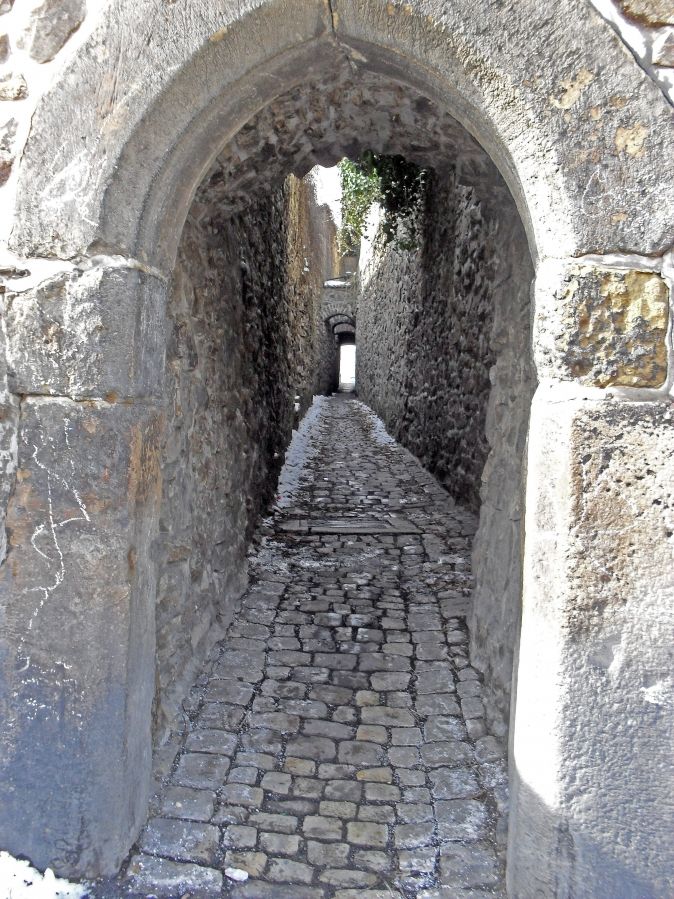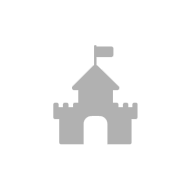Ancient history and art in - Kadaň Castle
The image of Kadaň Castle built on the mountain above the Ohře River is reflected down below in the waters of the Ohře River and reminds us of times long gone. It is one of the best preserved town castles. The castle was founded together with the town by Přemysl Otakar II and it was integrated into the town fortification walls. The castle roof and facade were recently repaired. In the eastern wing we will find the town library with an internet cafe and ceremonial hall. For several years the gallery of Joseph Liesler in the castle has been open to the public. Food and refreshment on the town square - Mírové náměstí (Peace Square) Today's appearance of the historical town centre, which has been rightfully declared as a town historical monument in 1978, is enhanced by many beautiful town houses, religious buildings and remains of medieval fortifications. The entire square is dominated by the Column of the Holy Trinity and by the fountain called Šlikovský Pond where you can enjoy the soothing and refreshing fountain sounds and feel the refreshing water vapour which will help you to stay comfortable during hot sunny days. The rectangular square is dominated by the Church of the Elevation of the Holy Cross but mostly by the 53 m high glowing tower of the town Hall with a gallery, where you will find a permanent exhibition of paintings by Karel Havlíček. While you are wandering around the square, if you are observant, you will find a beautiful and glowing decoration on a gothic building No. 185 shaped like golden sun with a human face in the middle. If you want to refresh yourselves and keep our youngest visitors happy then you will surely find on the square or in the adjacent streets a suitable cafe or a pastry shop with comfortable seating. From the town square to the barbican and onto a dark street – the former Žatecká Gate and Katova Street You may enhance your experience from Kadaň if you take a look at the well-preserved barbican of the former Žatecká Gate located on the southeast side of the Peace Square. This front fortification of the Žatecká Gate (torn down in 1832) enabled guards to shoot to the sidesas demonstrated by the key-shaped gun holes. The barbican belongs to the second fortification zone, which was built to reinforce the inner fortification line. Then we may walk along the town walls and take a look at the executioner/torture room No. 190, which is a part of the town fortification walls. From here a dark and mysterious street - the so called Katova ulička (the Executioner's Street) located on the square goes through the gate for pedestrians - called the fortna. The gloomy atmosphere is further enhanced by stone walls with gothic window openings and brick extension arches. The town and the countryside at your fingertips – viewing post on Holy Hill A unique panoramic view is offered by the publicly accessible 16 m high tower at the top of Holy Hill. A blue hiking trail starts right in the square and goes through the Mikulovická Gate and Smetana's Alley to the foothill of the forested Holy Hill. From there we will take an easy climb uphill until we reach the viewing post, where we will find a stone platform with a steel frame structure. We will be rewarded for our short climb up the spiral staircase when we see the open view of the town centre and the picturesque countryside around. Pursuing legends and minerals of the monastery – Franciscan Monastery On our way back from the viewing tower we may visit the nearby former Gothic Franciscan Monastery with its unique vault arch ceiling and mural paintings. A part of the monastery is also the Pilgrimage Church of the Fourteen Holy Helpers and a picturesque, peace-evoking garden, where you may relax and rest after your climb up to the viewing tower. In the cellars of the monastery you will find the town museum with a permanent exhibition showing mineralogical and archaeological artifacts and demonstrations showing the mining process and raw minerals processing done in the Kadaň region. You can also take a guided tour and see other interesting parts of the monastery and church. The beginning of the monastery is enveloped with a legend that tells us of a nobleman who was to be executed at the town gallows. He regretted his actions and asked his patrons and saints for forgiveness. And they heard him. He was hanging on the gallows for three days and did not die. This miracle spared the unfortunate man and forced the council to move the gallows elsewhere and build the Chapel of the Fourteen Holy Helpers here.




































